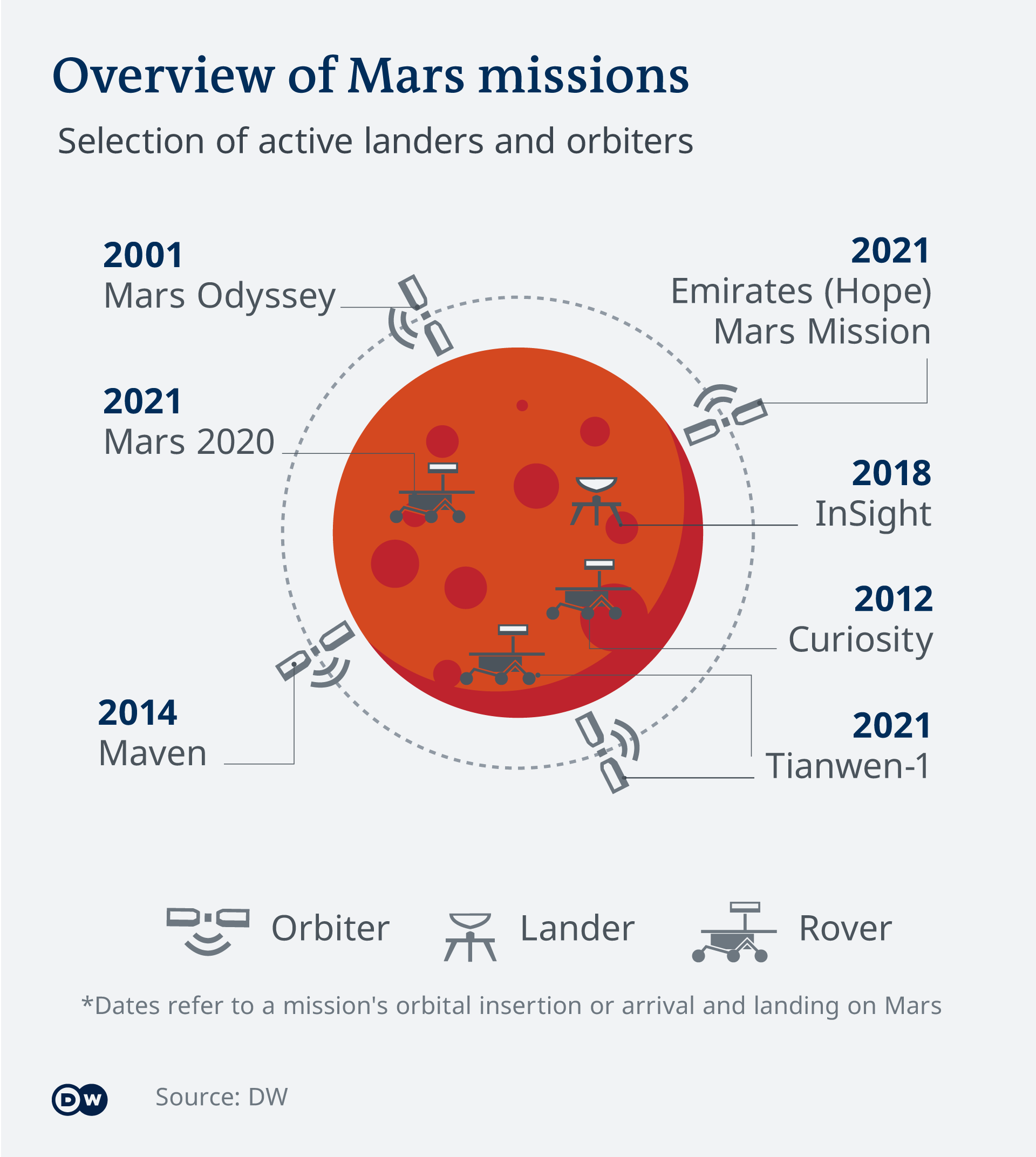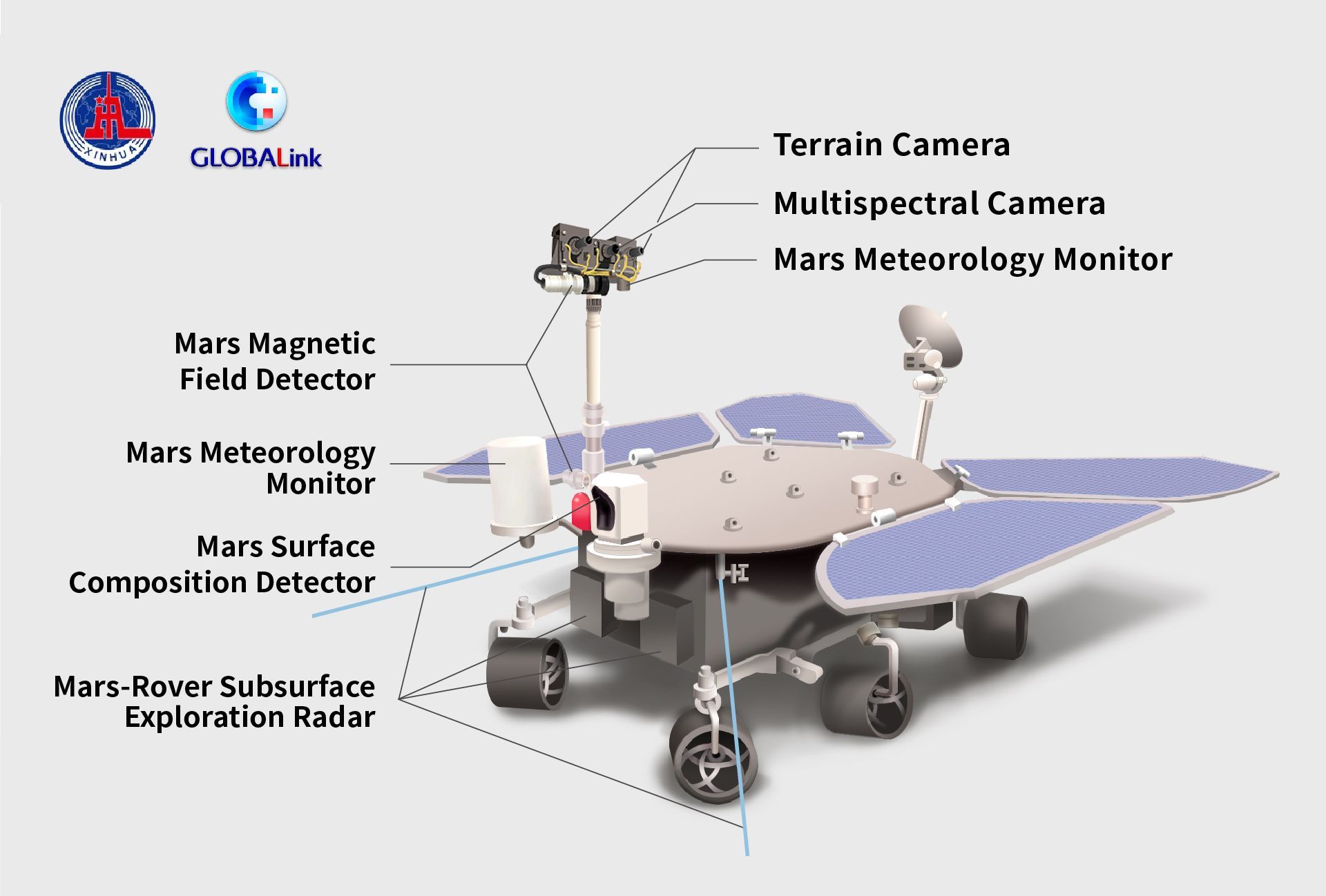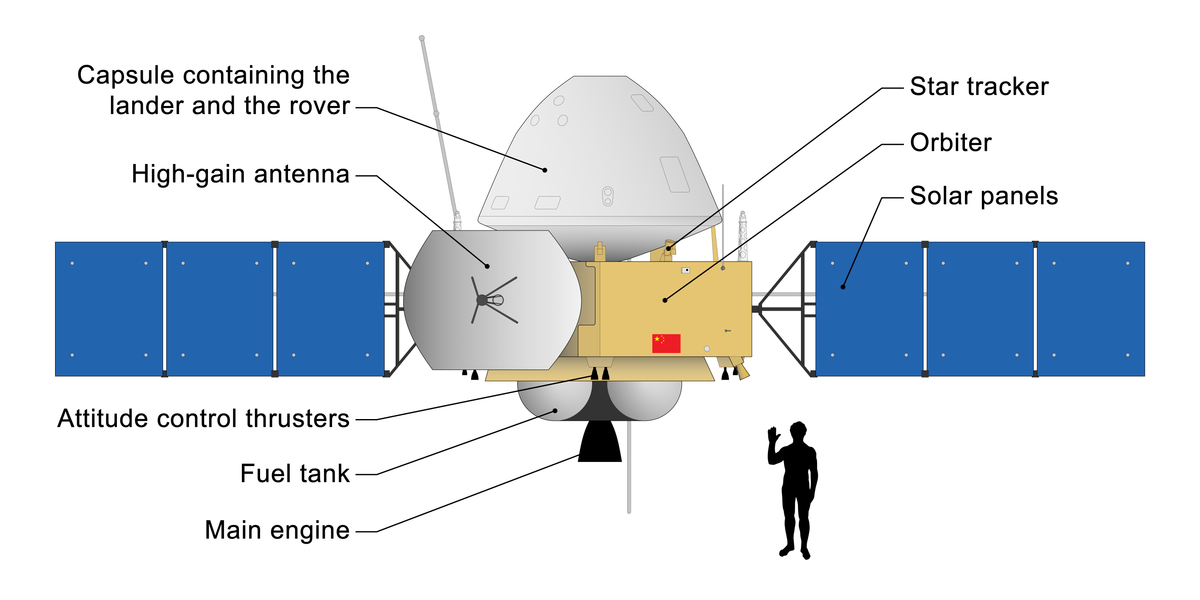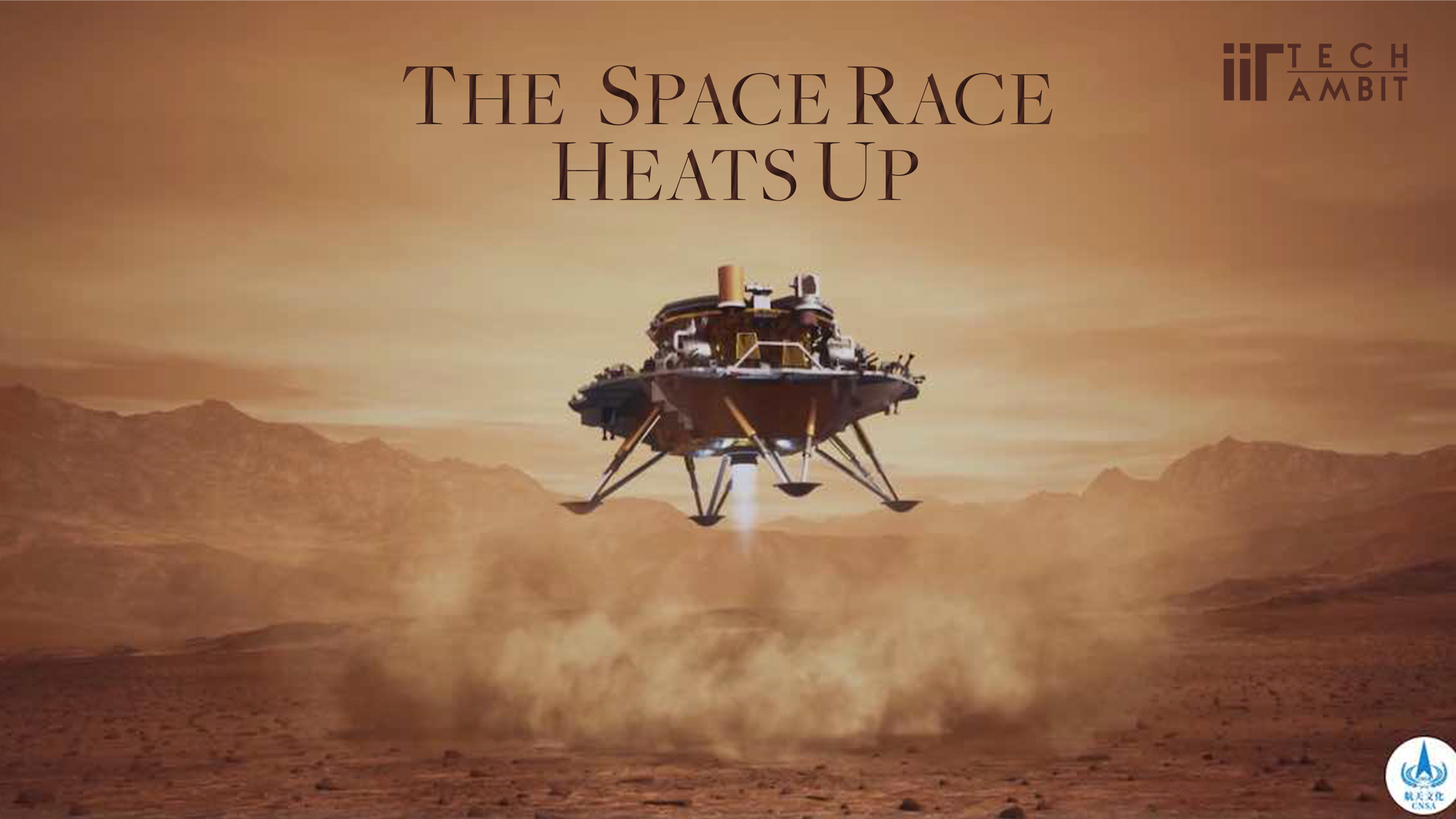On Friday 14 th (May 2021) 23:18 [UTC], China National Space Administration (CNSA)‘s lander module carrying the Zhurong rover from Tainwen-1 spacecraft touched down on Mars after a successful descent through the thin Martian atmosphere making china the second country (only after the United States of America) to successfully land a rover on the Red Planet after its previous attempt in 2011 (Yinghuo-I) failed due to booster malfunction during launch.
The name Tianwen-1 translating to ‘Questions to Heaven’ comes from a poem written by Qu Yuan (about 340-278 BC), one of the greatest poets of ancient China and signifies the Chinese nation's perseverance in pursuing truth and science, according to the CNSA. [1]
After being in the orbit since February 2021, the lander carrying the 529 pound Zhurong rover successfully touched down on Utopia Planetia- a large plain in the northern Martian hemisphere believed to have been covered in vast stretches of an ancient ocean millions of years ago. This is the same plain where NASA’s Viking-2 probe landed in 1976.

Named after a Chinese mythical God (of Fire), the Zhurong rover survived the perilous ‘7 minutes of Terror’ involving a complete blackout of information between the rover and the control center back on earth. The Lander-Rover assembly, protected by a heat shield survived extreme temperatures during the landing decelerating from supersonic entry speeds of about 20,000 miles per hour with a gigantic parachute and a combination of retro-rockets and thrusters to align itself before slowly touching down on the surface.
“The craft’s plummet through the Martian atmosphere had to be performed autonomously. Each step had only one chance with several closely linked actions. Had there been any flaw, the landing would have failed”
– Heng Yan, an official at the lunar exploration and space program center of China National Space Administration (CNSA) told Xinhua-a local news agency.
The Rover, which boasts of a complex suite of instruments, is expected to last three Martian months (about 92 Earth days) and is now set to survey the geological structures on and below the Martian surface in a bid to reveal the geological processes that might have shaped the formation of the red planet, particularly in and around utopia planetia. Its set of instruments include a multispectral camera to study the composition of rocks and soil, a navigation camera along with a Ground penetrating radar and an advanced spectrometer. Like NASA’s Curiosity rover, it’s spectrometer includes a laser-based technology capable of zapping rocks to study their interior and composition. Apart from this, the rover also boasts of a magnetometer to measure the magnetic field in it’s viscinity.
This could provide insights into how Mars’s magnetic field gradually deteriorated over time, one of the primary reasons behind the cold-dry habitat of the planet- hostile to life.

The Tianwen-1 mother spacecraft will remain in orbit around the planet through its two year mission. This too, is equipped with some advanced scientific instruments such as charged particle detector, spectrometer (to study the mineralogy), Ground penetrating radar (GPR) and a magnetometer.

The Path Ahead
Given the precarious success rate of inter planetary missions, with more than 60% of them being unsuccessful, this milestone is of immense significance in china's space and aviation development. The Mission is expected to give China valuable experience on the Red Planet and lay the preliminary groundwork for a possible sample return mission planned for the end of the decade with bringing Martian samples back to Earth remaining a top priority for the scientific community.
CNSA’s success comes at a time when non-US actors (especially Asian ones) are featuring prominently in the space diegesis of humanity with space becoming a tool of ‘geopolitical and diplomatic competition’ indicating the ‘Space Race’ no longer remains a ‘cold war’ between the United States and the Soviet Union.
That china is aiming to win this ‘new space race’ shouldn’t come as a surprise given the nation’s achievements over the recent decades. From becoming the first country to land on the Moon in the past four decades and the only one to land successfully on the dark side (with moon’s rate of spin tidally locked with earth, it’s farther side, also called the dark side always points away from earth) it has also planted it’s flag on lunar soil and brought samples of lunar rocks back to earth, becoming only the third nation to do so after USA and the Soviet Union. With several more ambitious missions planned for the coming future, one of which is establishing its own space station and sending humans to mars, china is quickly closing on the technological gap from its American and soviet counterparts and has presented a strong case for interstellar dominance in the future.
It’s other Asian neighbors aren’t much behind and are catching up too. The United Arab Emirates' (UAE) first-ever interplanetary mission successfully inserted the ‘Hope probe’ into Martian orbit in February 2021 in a bid to gather important scientific data about Martian climate and its geology. The Indian Mars Orbiter Mission (MOM) aka Mangalyan also succeeded in inserting an orbiter spacecraft into the Martian orbit making it the first country to do so in the first attempt.
With the advent of Private agencies such as Space X, Blue Origin, and Virgin Galactic in the arena, Space no longer remains the sole domain of Governmental Agencies. The cost of space travel has gone down subsequently with a synchronous advancement in deep space technology. All of this is paving way for catalyzing new revolutionary discoveries capable of changing the course of Humanity. One can’t help but wonder what amazing discoveries await us!
Glossary
Curiosity | Hope probe | Mangalyan | Space Race | Utopia Planetia | Viking-2


